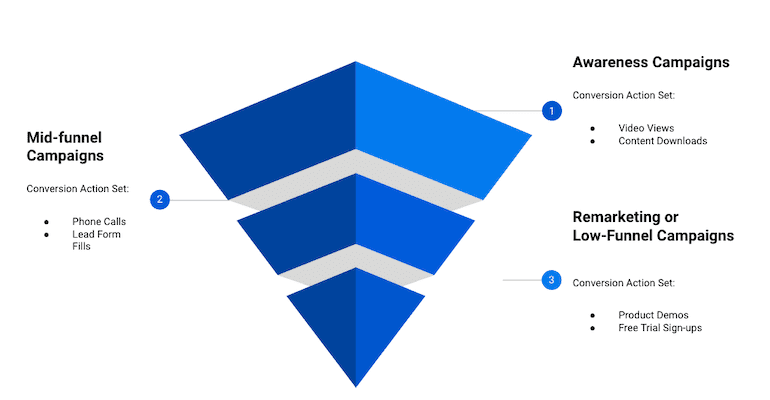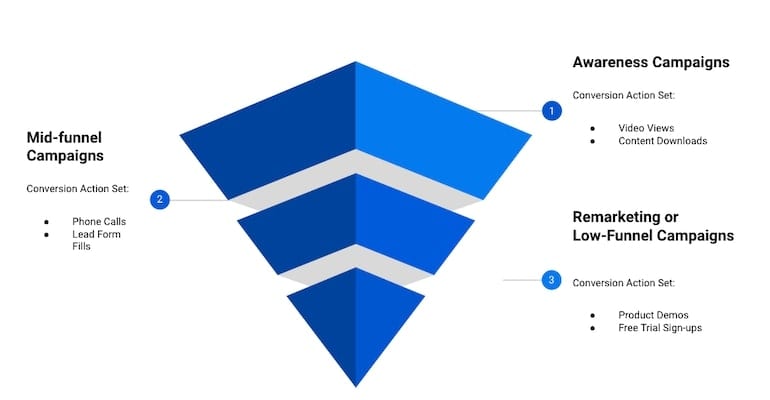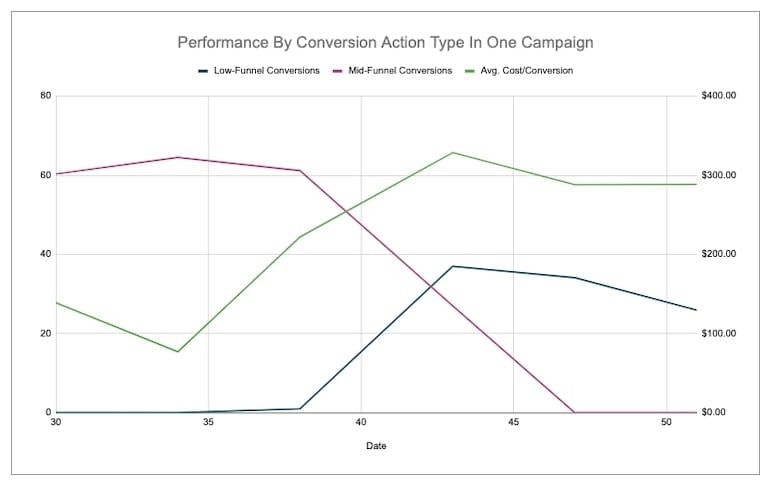How A Conversion Action Sets Funnel Drove A 160% Increase in Revenue

Conversion Action Sets are one of the greatest in the evolution of Google products, and I’m surprised at the seeming lack of adoption across the industry. For this lover of B2B Marketing, my client’s funnels have never looked better and it’s because I can tightly control what lead types I want to generate from campaigns and I can control the cost through automated bidding.
My colleague, Suzanne, wrote an illuminating article offering guidance on when to use Conversion Action Sets, but I’d like to delve into how to strategically craft a funnel with conversion action sets and the resulting performance.
Imagine that you have a brand with a long sales funnel and there are several types of account conversion actions tracked:
- Video Views
- Content downloads
- Lead Form Fills
- Phone Calls
- Requesting a Product demo
- Free Trial of Product
We know that the value assigned to a prospect watching a video is inherently lower than a prospect raising their hand and requesting a free trial of your product because the expressed intent is different. If you’re not using conversion action sets, then this knowledge is not reflected in your strategy and that’s a problem.
This is especially true if you’re using automated bidding. The algorithm is going to go after the easiest conversion action to obtain and this may not be in the best interest for your client’s business. Conversion action sets let you prioritize your conversions based on what is going to drive profitability. Below is an easy model to follow to if you’re interested in structuring accounts with conversion action sets:

Now, you can also select your bid-strategy based on the values associated with the conversion actions. For example, you might use Max Conversions for your awareness campaigns, but tiered Target CPA for mid and low-funnel campaigns. In this example, mid-funnel target CPAs could be $25. For low funnel, you would target a higher CPA given the higher value of the lead. A $100 CPA wouldn’t be outrageous. You’ll want to reverse engineer your goal CPAs based on the value of the product.
This strategy is useful if you do not have post-conversion sales data for your clients. However, it becomes even more strategic if you have offline conversion data or the salesforce connector live in your account. With this data, you become a powerhouse because you can utilize sales goals as conversion action sets.
Here is an example of how this worked in one campaign I tested it in. The goal was to optimize the campaign in favor of low-funnel conversions. I implemented the conversion action set in favor of low-funnel conversions in week 38. You can see on its own (weeks 30-38), the campaign was exclusively driving mid-funnel conversions. For a month after implementation, we saw low funnel conversions rise as mid-funnel conversions declined. CPAs rose as higher value leads rose. By the second month, all mid-funnel conversions dropped off entirely and CPAs for low-funnel conversions leveled out.

Expectedly, this strategy positively impacted sales revenue as well.
For the two months following this shift in strategy, we saw sales revenue increase by 160% over the preceding two months.
Conversion action sets take 10 minutes to set-up and can revolutionize how you structure and manage your accounts.



